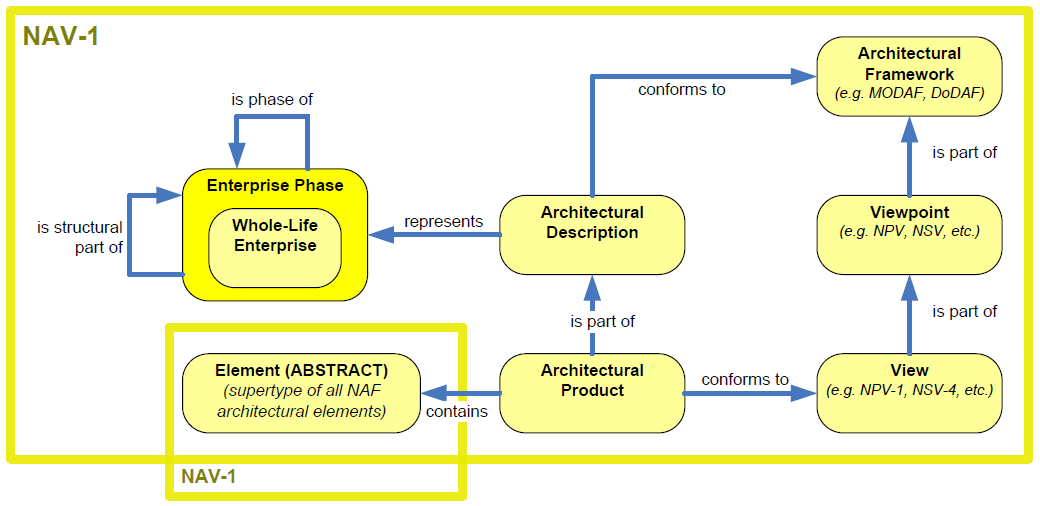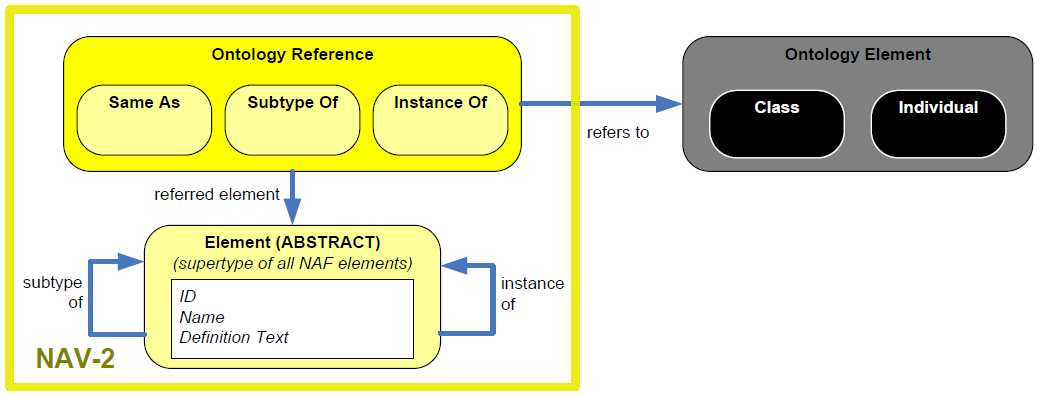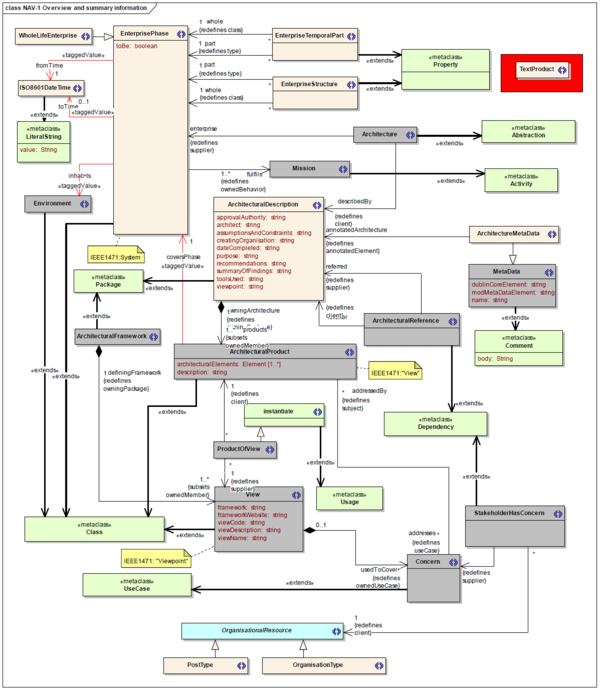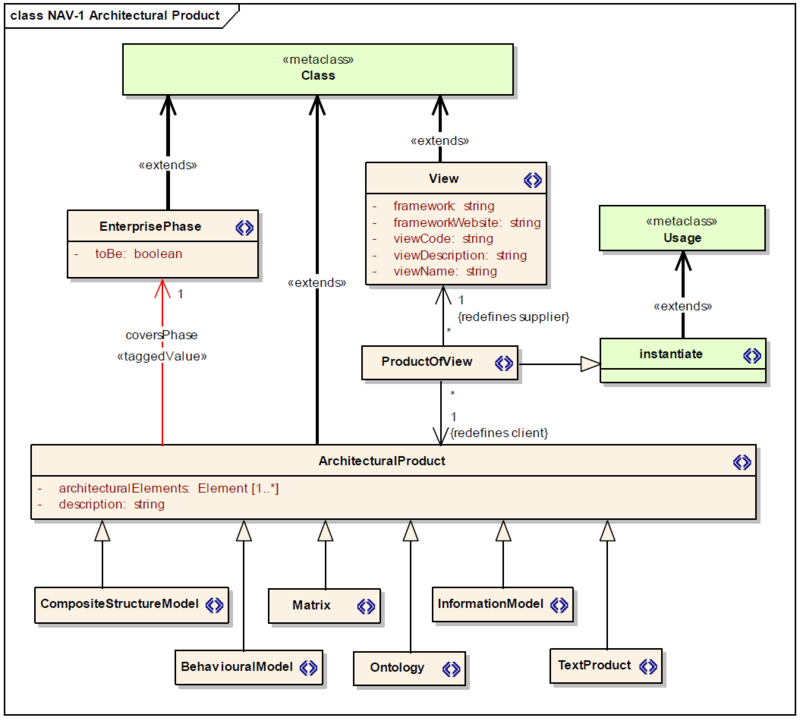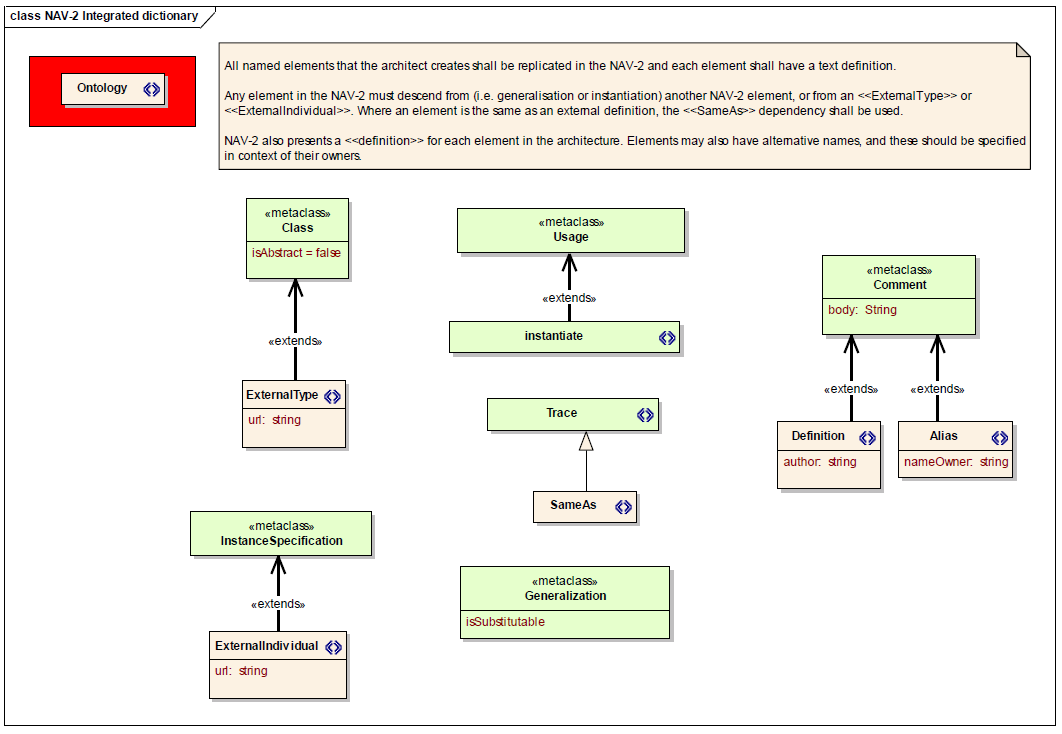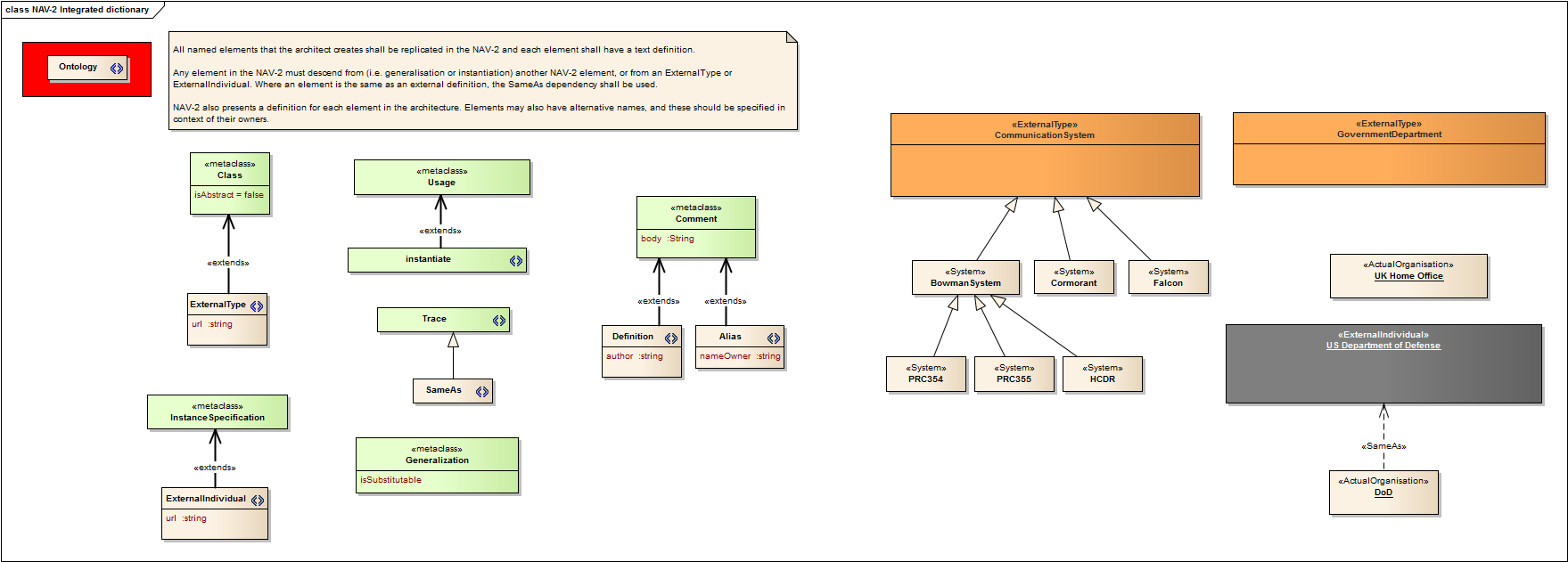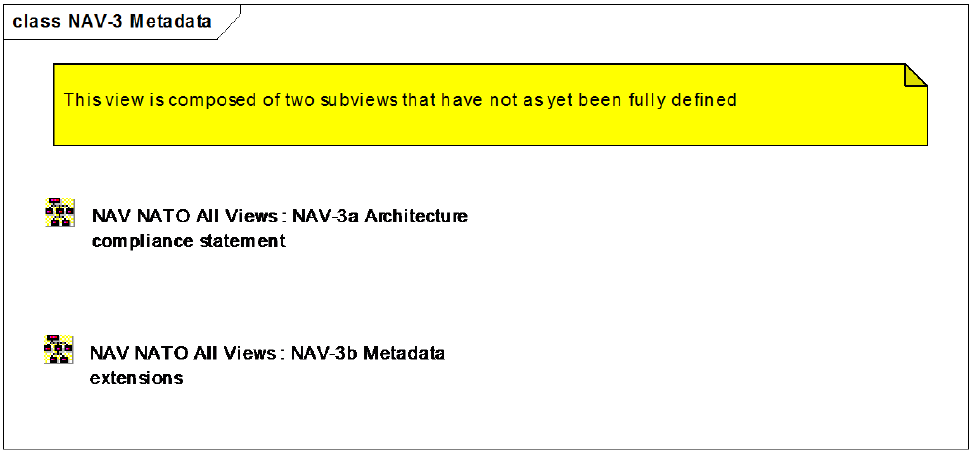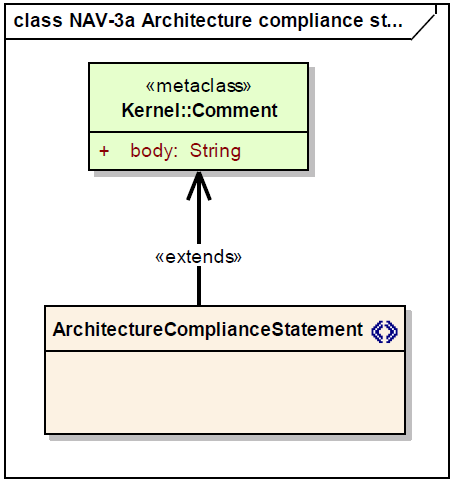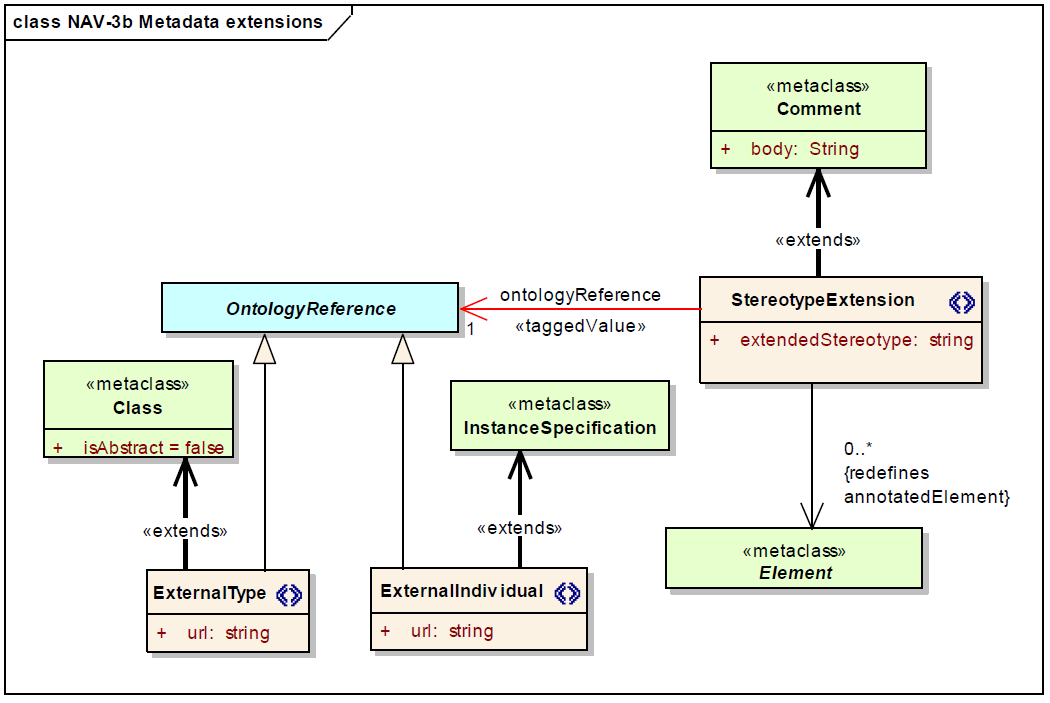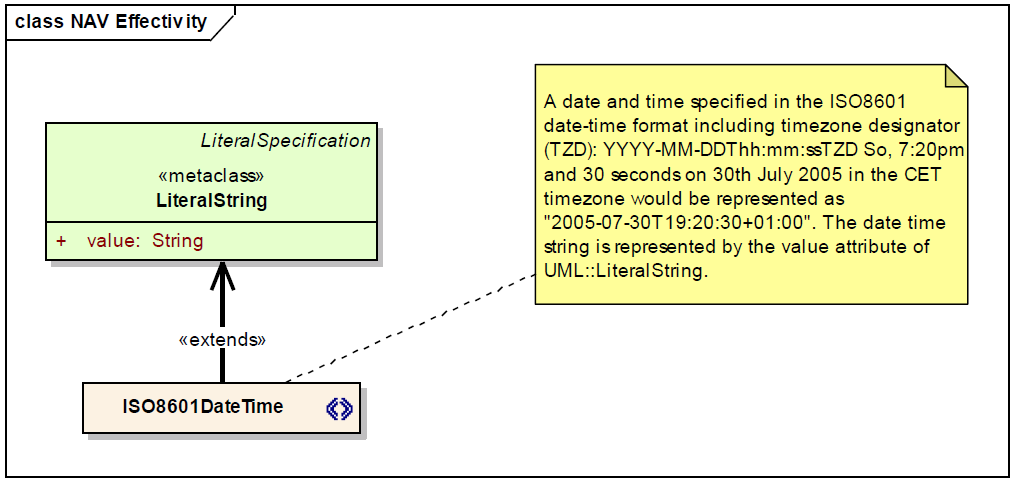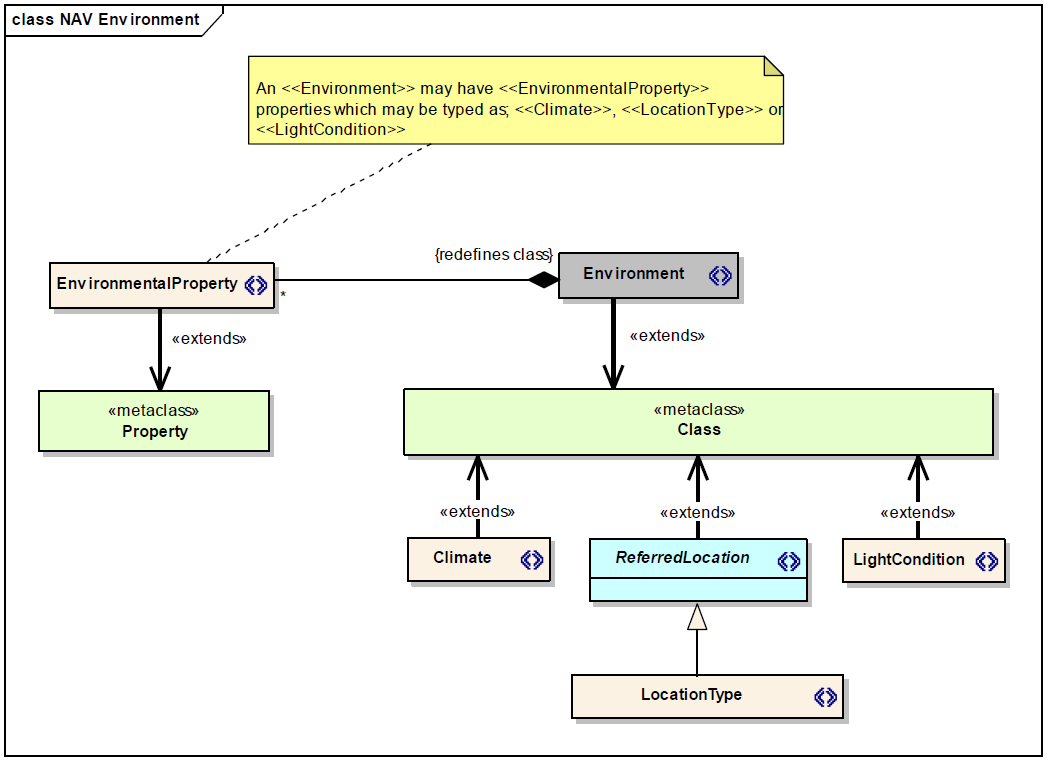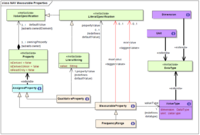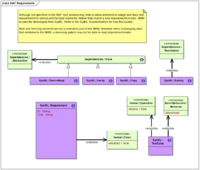Nato Architecture Framework (NAF) - 4.2 - NATO Meta Model - NAV
NATO All View (NAV)
NAV-1 Overview and summary information。
The data in an NAV-1 can include:
- Scope, purpose
- Listing of views used
Nato Architecture Framework (NAF) - 3.1 - NATO All View#NAV-1.2C_Overview_and_Summary_Information
NAV-2 Integrated dictionary。
The data in an NAV-2 can include:
- Ontology References
- Specializations Relationships (Subtyping)
- Type-Instance Relationships
NAV-2 Integrated dictionary。
Each entry in an Integrated Dictionary should display the following properties:
- The name used for this element in the architecture
- Alternative names for this element – e.g. if the element is listed in the NATO ontology it may have multiple names
- A brief description of the element
- A list of the Views in which the element is used
A NAV-2 is structured using two types of hierarchical relationship between elements:
- sub-super type (relationship is a relationship between two classes with the second being a pure specialization of the first)
- type-instance (relationship between a class an instance that is a member (instance) of that class)
Note that classes may be members of other classes (e.g. the class ‘Colonel’ is a member of the class ‘Rank’).
Nato Architecture Framework (NAF) - 3.1 - NATO All View#NAV-2.2C_Integrated_Dictionary
NAV-3 Metadata。
The Metadata view consists of two subviews:
- NAV-3a Architecture compliance statement
- NAV-3b Metadata extensions
Both of these subviews are at present intended as reports of:
- (a) compliance statements that have been inserted within the architecture model as stereotyped comments and
- (b) as statements concerning additions made to the basic NMM metamodel.
In case the latter is attempted it should be noted that the comments should be attached to the stereotypes that have been added rather than the use of the stereotypes themselves within the architecture model.
Nato Architecture Framework (NAF) - 3.1 - NATO All View#NAV-3_Metadata
NAV metamodel diagrams。
- NAV-1 Overview and summary information
NAV metamodel diagrams。
- NAV-1 Architectural Product
NAV metamodel diagrams。
- NAV-2 Integrated dictionary
Exercise。
- Match the metamodel elements to the model elements
NAV-3 Metadata。
NAV-3 Metadata。
NAV-3a Architecture compliance statement
NAV-3 Metadata。
NAV-3b Metamodel extensions
NAV Effectivity。
NAV Environment。
NAV Measurable Properties
NAV Requirements
NAV metamodel glossary
| Element | Definition |
|---|---|
| Alias | An alternative name for an element. |
| ArchitecturalDescription | A specification of a system of systems at a technical level which also provides the business context for the system of systems.
IEEE1471 describes an architectural description as ‘a collection of products to document the architecture of a system’. This is something of a circular definition (as product in this sense is an architectural product), and also assumes a technical system, whereas architectures complying with this metamodel describe an enterprise - i.e. the system of systems and the human processes they support. |
| ArchitecturalFramework | A set of connected <<View>> specifications which serve to define how an <<EnterprisePhase>> may be represented by an <<ArchitecturalDescription>> |
| ArchitecturalProduct | A connected and coherent set of Architectural Elements which conform to a <<View>>. |
| ArchitecturalReference | Asserts that one architectural description (referrer) refers to another (referred). |
| Architecture | An abstraction of an <<EnterprisePhase>>, represented by an <<ArchitecturalDescription>>. |
| ArchitectureMetaData | A <<Metadata>> element that applies to the whole architecture. |
| AssignedProperty | A property with a value assigned. |
| BehaviouralModel | An <<ArchitecturalProduct>> that specifies the behaviour of the enterprise or part of the enterprise. |
| CompositeStructureModel | An <<ArchitecturalProduct>> that specifies the structural aspects of the enterprise or part of the enterprise. |
| Concern | An interest in a subject held by one or more stakeholder <<OrganisationalResource>>. |
| ConformsTo | Asserts that an element in the architecture conforms to a <<Standard>>. |
| Definition | A definition of an element in the architecture. Note - every element added by an architect must have a definition. |
| EnterprisePhase | A current or future state of a <<WholeLifeEnterprise>> or another <<EnterprisePhase>>. |
| EnterpriseStructure | Asserts that one <<EnterprisePhase>> is a spatial part of another.
Note: This is a topological structuring relationship, hence the <<EnterprisePhase>> may be physically disjoint. |
| EnterpriseTemporalPart | Asserts that one <<EnterprisePhase>> is a temporal part of another.
Note: This means that both <<EnterprisePhase>>s have the same spatial extent - i.e. this is only a temporal structure. |
| Environment | A definition of the conditions in which something exists or functions.
An <<Environment>> may be specified in terms of <<LocationType>> (e.g. terrain), <<Climate>> (e.g. tropical), and <<LightCondition>> (e.g. dark, light, dusk, etc.). |
| EnvironmentalProperty | Asserts that an <<Environment>> has one or more properties. These may be <<Climate>>, <<LocationType>>, or <<LightCondition>>. |
| ExternalIndividual | An individual (i.e. something which has spatial and temporal extent) defined by an external ontology. |
| ExternalType | A type defined by an external ontology. Note: this may be higher-order - i.e. a type of a type. |
| FrequencyRange | A <<MeasureableProperty>> that specifies maximum and minimum frequencies, measured in Hertz as real numbers. |
| ISO8601DateTime | A date and time specified in the ISO8601 date-time format including timezone designator (TZD): YYYY-MM-DDThh:mm:ssTZD So, 7:20pm and 30 seconds on 30th July 2005 in the CET timezone would be represented as ‘2005-07-30T19:20:30+01:00’. The date time string is represented by the value attribute of UML::LiteralString. |
| InformationModel | An <<ArchitecturalProduct>> that represents the structure of information - e.g. a logical or physical data model. |
| LightCondition | A specification of environmental lighting conditions.
Examples would be daylight, dusk, night, moonlight, artificial. |
| Matrix | An <<ArchitecturalProduct>> that presents information in a tabular form. |
| LightCondition | A specification of environmental lighting conditions. |
| MeasurableProperty | An <<AssignedProperty>> of something in the physical world, expressed in amounts of a unit of measure. The property may have a required value - either specified by the [defaultValue] from uml::property attribute, or the [minValue] and [maxValue] to specify a required range. |
| MetaData | Annotation that can be applied to any element in the architecture.
Note: wherever possible, standard MetaData types should be used - e.g. conforming to Dublin Core Note for MOD Users: The MOD Meta Data Standard categories shall be used. |
| Ontology | An <<ArchitecturalProduct>> that represents real-world individuals and classes, and the relationships between them. |
| OntologyReference | A reference to an element in a recognised external ontology or taxonomy. |
| ProductOfView | Asserts that an <<ArchitecturalProduct>> conforms to a <<View>> specification. |
| QualitativeProperty | An <<AssignedProperty>> whose value is a text literal (string). |
| SameAs | Asserts that two elements refer to the same real-world thing. |
| StakeholderHasConcern | An assertion that a <<OrganisationalResource>> has a <<Concern>>. |
| Standard | A ratified and peer-reviewed specification that is used to guide or constrain the architecture. A <<Standard>> may be applied to any element in the architecture via the [constrainedItem] property of UML::Constraint. |
| StereotypeExtension | Defines an additional stereotype used in the architecture which is not defined in this metamodel. The body attribute contains the name of the new stereotype. The extendedStereotype tagged value shall contain the name of the metamodel stereotype which is extended. The ontologyReference tagged value shall be populated with a reference to the external ontology element represented by the new stereotype.
Note: this is effectively a short-hand method for representing ontology items in the architecture. New stereotype names can be created at will by the architect, provided that they reference an element in a recognised external ontology. Note: Any stereotypes added by the architect which do not have a corresponding <<StereotypeExtension>> will be deemed non-compliant and ignored by tools importing data compliant to this metamodel. |
| TextProduct | An <<ArchitecturalProduct>> that is represented as text. |
| View | A specification of a way to present an aspect of the architecture. Views are defined with one or more purposes in mind - e.g. showing the logical topology of the enterprise, describing a process model, defining a data model, etc. |
| WholeLifeEnterprise | An <<EnterprisePhase>> that represents the whole existence of an enterprise. |
| ArchitectureComplianceStatement | This extension of comment is intended to be used to state whether an architectural entity is compliant or not. It can be attached to any entity within the model that can accomodate a comment. |
